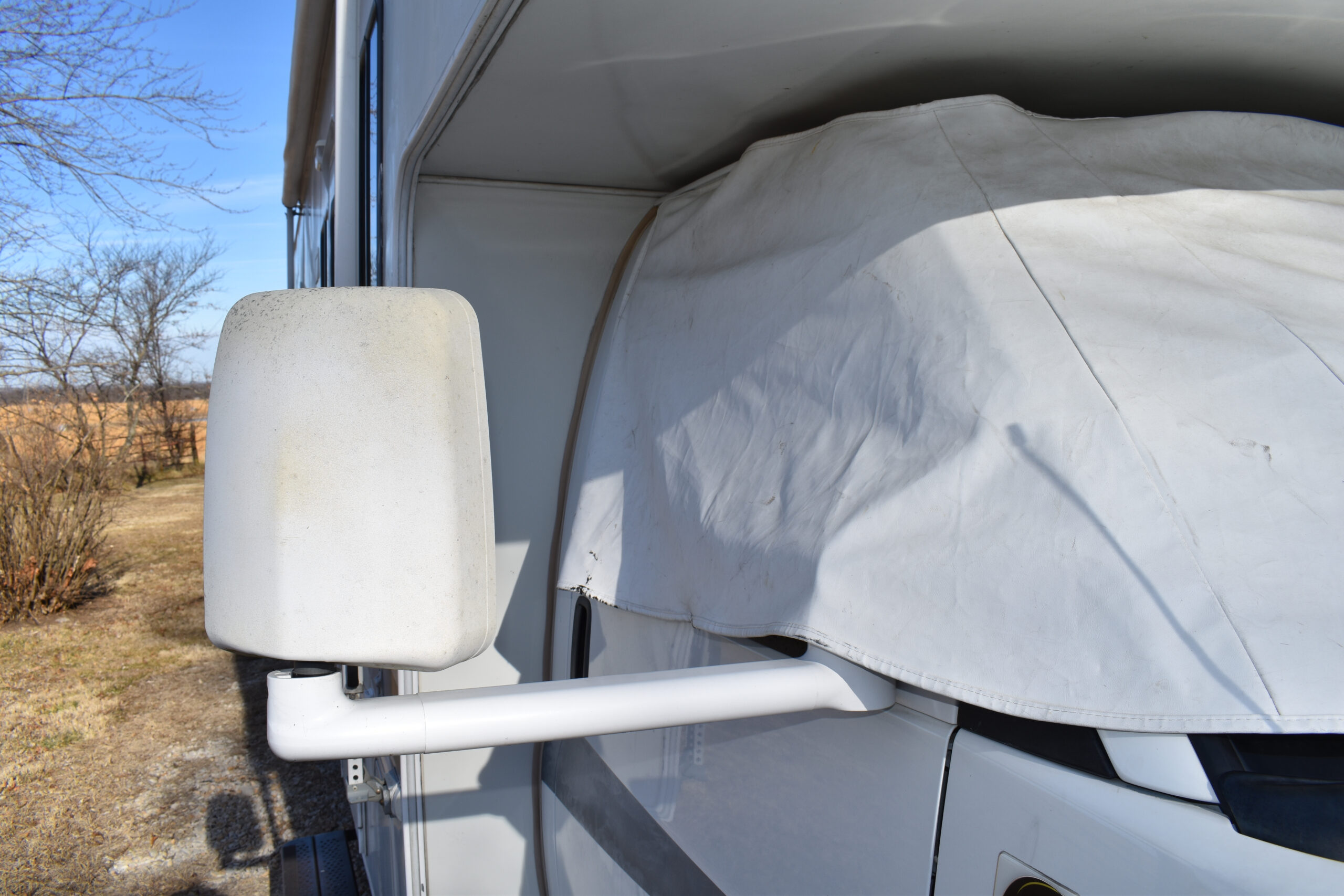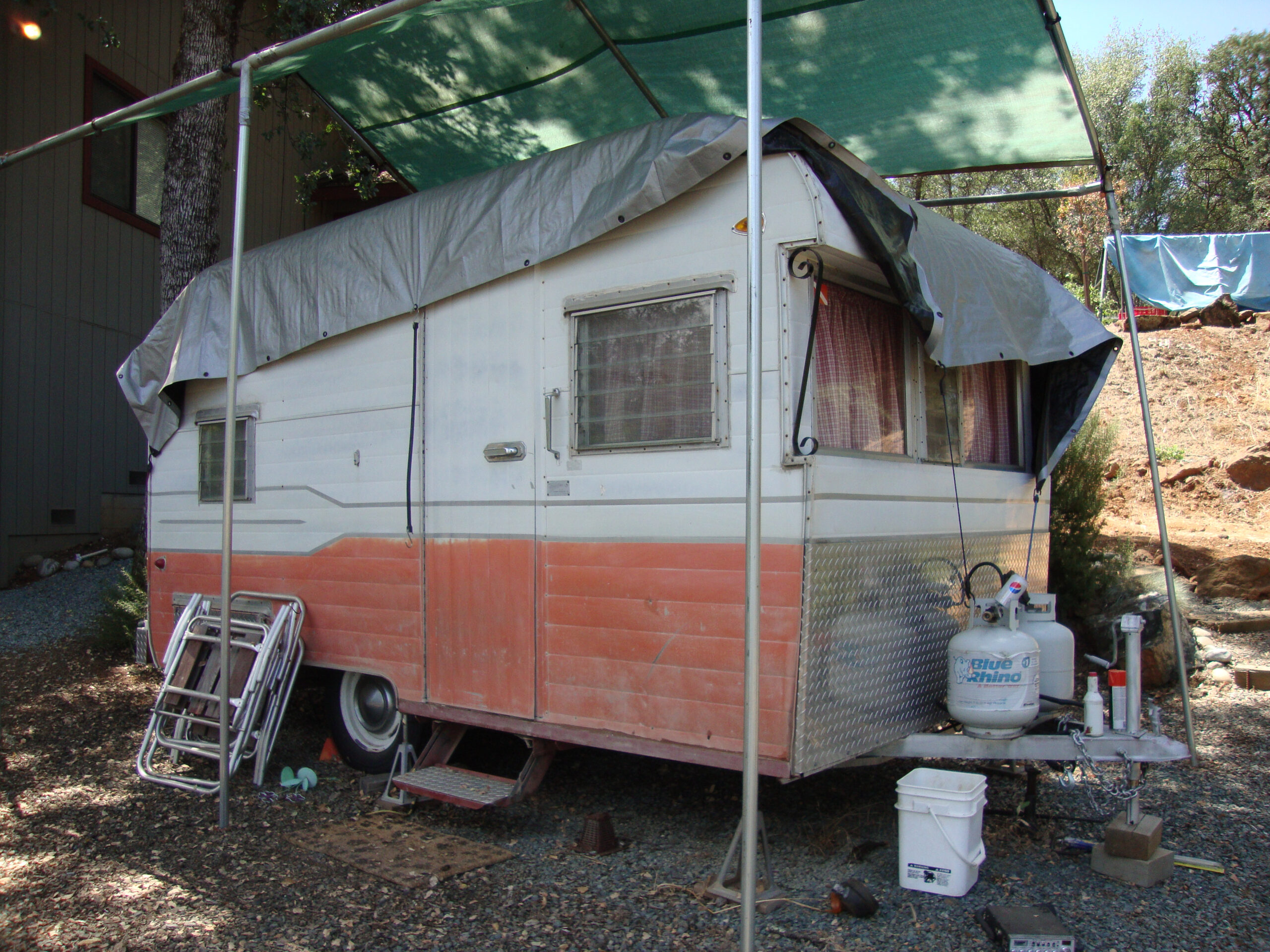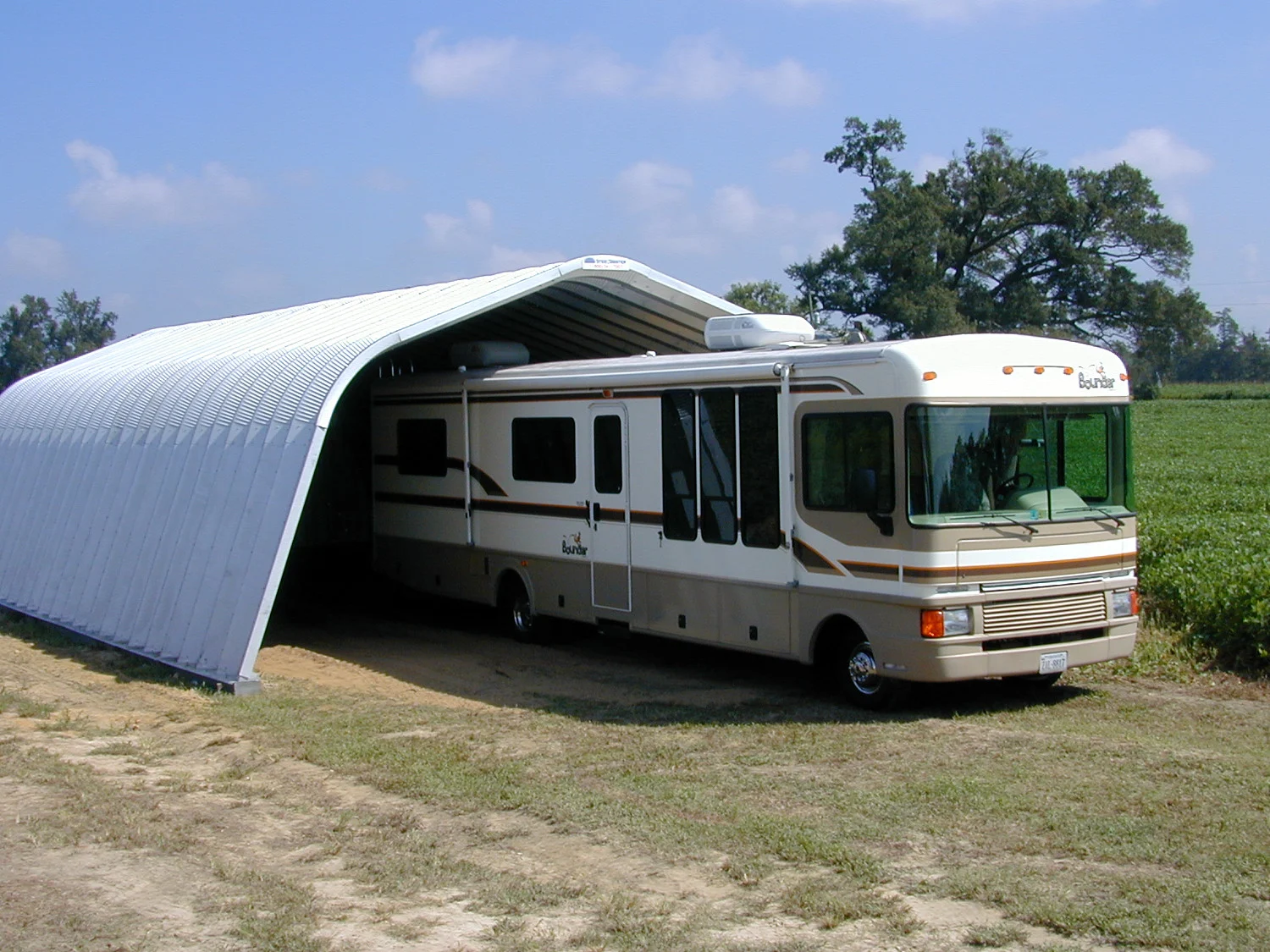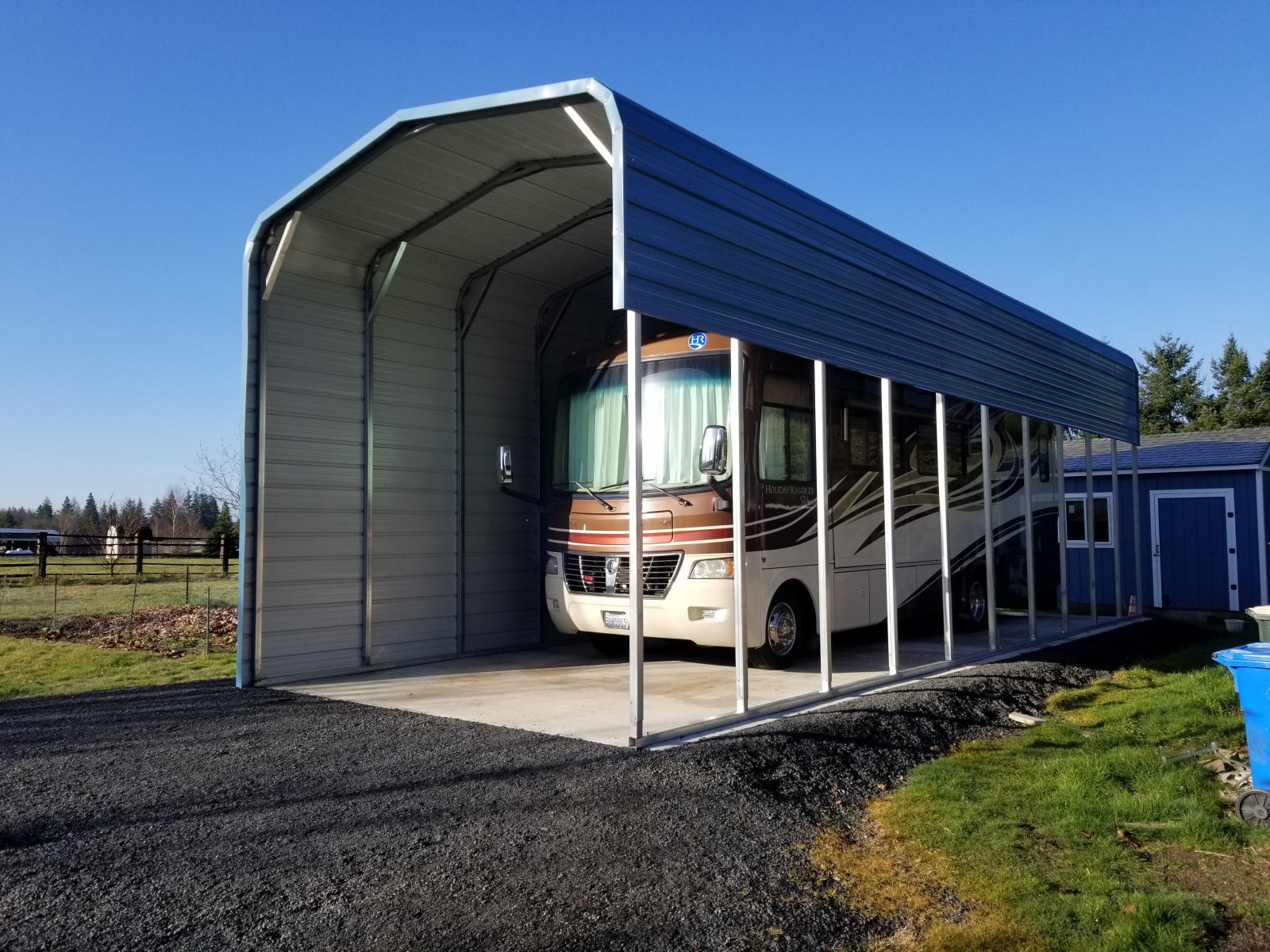
Let’s Compare Fabric, Vinyl, and Metal RV Covers
Many RVers are turning to metal RV covers to protect their RVs while not in use, but are metal RV covers the best choice financially?
Everyone can agree that exposure to the elements is detrimental to RVs. Ultraviolet rays from the sun can shorten the life of the rubber roof, age and discolor vents on the roof and sides of an RV, fade siding and decals, fade or deteriorate interior drapery, cause cracks to form on vinyl dashboards, sun rot tires, and a host of other detriments.
Precipitation falling on your RV can cause water intrusion through seams in the roof, around windows and through joints in the siding, which can be costly. Excessive snow on the roof can result in damage to structural members along with cracked roof vents and/or air conditioner shrouds. Windblown debris can also plug side gutters and result in holes poked in the roof.
There is no doubt that covering your RV can prevent some or a majority of these detriments from occurring, but what type of cover is best?
“When you’re not traveling the country seeing all the beauty nature has to offer, most RVers know that the ideal place to park it is in a garage or under a covered surface. Of course, finding a garage that can fit a large RV can sometimes be a struggle, and not everyone has a covered surface readily available. Luckily, creating one isn’t difficult, thanks to metal RV covers!
Says RV blogger Al Cabrera at RV Share
Types of RV covers
- Fabric cover or tarp
- Conventionally built wooden structure such as a garage or pole building
- Metal RV covers
Fabric RV covers
Fabric covers and tarps have a low initial cost, but can end up costing you more in the long run. They tend to trap moisture in the RV, rub exterior paint and finishes as they flap in the wind, and won’t protect your RV from heavy limbs that fall during wind storms.
Fabric covers and tarps won’t last as long as solid covers due to the weather. They are also inconvenient as you have to take them on/off and require you to get on the roof of your RV.
While taking them on or off, you run the risk of scratching your RV via abrasive dirt particles between the cover and RV. They also need to be folded and stored when not in use. Finally, you need to be concerned with safety as hanging onto a tarp or cover when the wind is blowing can result in serious injury if you are carried off the roof of your RV.
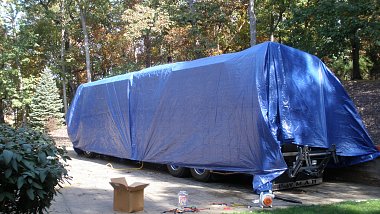
Conventional garages and pole buildings
Conventional garages and pole buildings are an option, but they tend to be costly, require permits, the wood is subject to rot from water and insects, they’re flammable, and subject to mold and mildew. You should also take into account that most existing residential garages aren’t an option as they won’t accept larger RVs.
Metal RV covers
Metal RV covers have many advantages over tarps, fabric covers, and conventional wood structures as they are made of extremely durable steel that won’t rot, mold or mildew, and are much more pest and fire resistant than wood structures.
Since they are not fully enclosed, they promote good air flow around your RV. Other than paint fade, metal RV covers are pretty much impervious to the effects of sun, and rain and snow easily slide off. They require very little maintenance and can last for decades.
They are prefabricated allowing them to be constructed quickly, placed on most any ground surface, require less (if any) permitting, and can be moved to a new location if needed. Since they are prefabricated, many manufacturers of metal RV covers offer their covers in kit form allowing do-it-yourselfers to erect them, saving the cost of commercial labor.
They are also considered “portable” by most taxing districts which mean they won’t impact your property taxes. Metal RV covers allow you to quickly drive your RV under and out of cover.
Conclusion
After taking into account lifespan, durability, maintenance costs, capital costs, plus several of the other advantages listed above, many RVers find that metal RV covers are worth the expense over tarps and fabric covers, while not as expensive or burdensome as conventional permanent wood structures.
If you are still undecided whether a metal RV cover is right for you, I encourage you to watch this short video:
See also:

